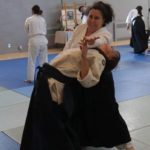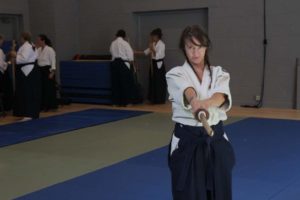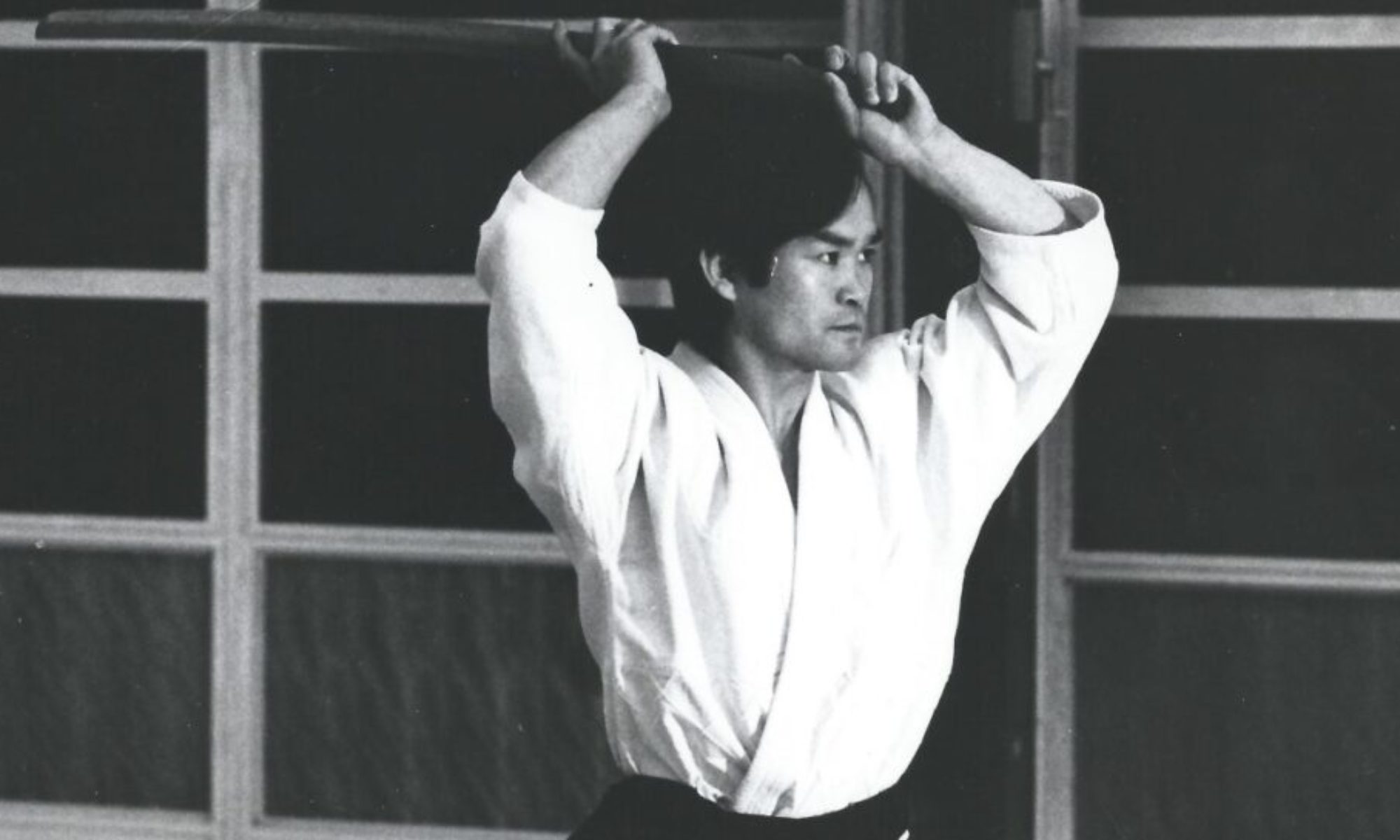By Sarah Cuevas, Grass Valley Aikikai
In September I was fortunate to have the experience of attending the Women’s Aikido Camp in Santa Fe, New Mexico. The travel to the event was a story all on its own. Missed flights, multiple rerouted gates, and lengthy wait times (an extra 8 hours), were just some of the events that made the travel to Camp a hilarious story. However, my experience of Camp outweighed the travel to and fro. As I usually do when attending an event, I made an agreement with myself to let go of expectations. Life is too unpredictable to come loaded with desire. I had never been to an all women’s anything before (with the exception of a few girls’ nights here and there, but nothing of this magnitude). So I arrived with an open heart and mind and an intention to train hard and do my best.
Our rerouted travel kept us from attending the first evening class. We arrived by shuttle in the dark, to the retreat center where Camp was held. Showed to our room by Varjan Sensei herself, we were delighted to discover comfy beds and cozy furnishings. A good night’s sleep was definitely in store for myself and my dojo mate, Marci Martinez. The next morning we awoke to a perfect view of the high desert, and then were even more astounded by the breakfast buffet. After homemade granola, fresh greek yogurt, organic fruits and juice options, good coffee, scrambled eggs with meat or vegetarian options, we practically rolled ourselves back up to our rooms to dress and go to the dojo.
The dojo was a simple yet quality setup in the gym of the retreat center, with long, tall windows at the top for great natural light, and doors at either end to keep the air flowing. I walked in noticing the calm air. Not the calm-before-the-storm kind of calm, more like the quiet peace you find after the space of meditation. There was an inherent unhurried-ness coupled with the power of being a martial arena. Being one of the first to arrive on the mat, I noticed the energy shift as more women arrived. Having no expectations, I observed, interested to see how this was going to play out. Turns out, it began seemingly no different than a seminar where our brothers were in attendance. We lined, up, we bowed, we entered training with a confirmed sense of martial awareness. With skilled teaching, precision ukemi, and a relatively crowded mat, we trained hard. Technique followed technique, one after another, sweat abounding and egos aside, we trained in body arts and weapons.

It wasn’t until someone triggered a recognition in my head by saying, “So this is what it feels like when there is no testosterone on the mat” that I even noticed a difference in the energy of the room. There was a difference: a subtle, yet powerful, transcendence of this hormonal variation. It is challenging for me to describe, because it didn’t feel like anything was lacking, and it didn’t feel like an abundance of estrogen either. It just felt, well, softer. When I say softer, I don’t mean less martial, or easier training. I refer to a feminine energy, the type of energy you feel when you know you are being cared for and supported, yet held to a high standard, like that of a grandmother with her grandchild. Yet there certainly remained a requirement for all present to challenge themselves in their training, an element inherent to progression, regardless of gender, or of the gender of training partners.
Throughout the remainder of Camp, we went in this fashion: delectable meals, phenomenal teaching, sweaty gi, heavy sleep. We had some nights with evening discussion. It seemed a communal agreement that group meetings were something we could take with us back to our home dojos, and to our greater Aikido community.
Many topics were discussed, but there seemed to be much discussion around misogyny. I should comment that after hearing some of the stories that my fellow women Aikidoka have experienced, I feel grateful to not have had the circumstance of discrimination alive in my dojo or at any seminar I have attended. However, it was an obvious issue for other women, leaving me surprised at the reality of it. Male students and teachers have always been fair-minded towards me, however it seems not the same way for all women. Please don’t misunderstand and come to the conclusion that this was a man-hating event. There were many topics discussed, but because of the alarming nature of this topic, I choose to write about it. Due to my own ignorance, naivety, or both, I had never thought that women were managing discrimination in this way. Out of respect for the women attendees, I won’t go into details, but there were a range of patterns and actions brought up. I think it is enough to just mention it in this platform, to bring awareness to the topic. It seems likely to me, that after merely reading that misogyny is an issue for some of your fellow Aikidoka, that the reader will bring this awareness to the mat with a heightened sensitivity for fair minded-ness. That is all I am asking here, for the blessing of bringing awareness to training. Training is already challenging, let us keep it as simple as it can be without adding any friction to it. O’ Sensei instructs, “Training should always be conducted in a pleasant and joyful atmosphere.” With this in mind, it may be easy to maintain his request, because with any type of discrimination comes the difficulty of managing the response. Let us be easy on ourselves and each other, free from bias and judgments, allowing each person their right to train in a safe and joyous environment.

After four days of amazing training, Marci and I headed back to the airport. Thinking we would arrive with no problems, our shuttle ran out of gas on the highway. Ironically, our rescue shuttle, once we were all loaded up, would not start. We joked about how our travel was cursed this trip, when all of a sudden, after half an hour of waiting on the rescue shuttle, and half an hour of sitting idle with the clock ticking to get to our flight on time, the shuttle van miraculously started. We arrived with literally five minutes to spare, made our flight, and nestled into the plane hilariously awaiting another debacle. But the trip home was fine with no other events. With a head full of new techniques, new friendships and life lessons, I returned home a happy Aikidoka.
